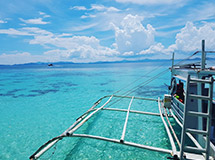
-
МјРЇСІИёСЖШИМі
-
 Malacañang Palace-Official Residence of the Pres
Malacañang Palace-Official Residence of the Pres 138,933
138,933 -
 Amana Water Park
Amana Water Park 115,446
115,446 -
 IFUGAO TRIBE
IFUGAO TRIBE 109,425
109,425 -
 Santacruzan-The Queen of all Filipino Festivals109,325
Santacruzan-The Queen of all Filipino Festivals109,325 -
 Water Refilling Station: an alternative source of drink107,374
Water Refilling Station: an alternative source of drink107,374 -
 LAMBANOG-THE POOR MAN\'S DRINK104,565
LAMBANOG-THE POOR MAN\'S DRINK104,565 -
 Christmas Parol [lantern in English]104,398
Christmas Parol [lantern in English]104,398 -
 HANGING RICE97,110
HANGING RICE97,110 -
 Taoist Temple94,029
Taoist Temple94,029 -
 Corn Fields in the Philippines90,508
Corn Fields in the Philippines90,508
'' Whale Shark (Butanding)''
''Oslob Cebu Philippines''

The Famous Signbord (P100 entrance)

Although Whale Sharks, or "Butanding" as they are locally known, 
, reaching lengths greater than 15 meters, they are remarkably gentle and docile
enough that it is generally safe to swim among them. Swimming among the whale sharks is a captivating experience.
If you are not comfortable swimming in the waters,
then it is just as amazing to experience them from the boat. The Butanding swim
along side the boat all the time.


These whale shark sightings in Oslob have been around for quite some time already.
ThereЁЏs about 14 or 15 of them in their area which have grown to be the fishermenЁЏs ЁЎpetsЁЏ.

Swimming with the sharks: A fearless fisherman is shown grabbing onto the back of a giant whale shark
shortly after feeding them by hand.
In the 1990s, whale sharks were poached in the waters off Pamilican Island, Bohol.
This was a lucrative business in the Visayas as whale shark meat and fins commended a high price in the Taiwanese market.
Thankfully, in 1998 Fisheries Administration Order 193 was signed making it illegal to catch, sell, buy possess,
transport and export whale sharks and manta rays in the Philippines.
The local fishermen explain that the practice of feeding the whale sharks was not forced on the animals
but was incidental. Uyap (small or brine shrimps) abound in the area and the fishermen use them as bait.
Starting in July 2012, a lot of the fishermen were forced to stop fishing
when a whale shark started to feed on the uyap.
Then more whale sharks came. To divert their attention, so the fishermen could continue fishing,
the fishermen would lead them out of the area by feeding them uyap further along the coast.
There are now estimated to be as many as 9 whales sharks in the area including some juveniles.
The practice of feeding the whale sharks for tourists to see,
started by chance in September 2011,
when a fishermen led a whale shark in front of a dive shop in Oslob much to the delight of the visiting divers.
By December 2011, tourists were flocking to the beach in Tan-awan not just to see the whale sharks
being fed but also to snorkel or dive with them.


When diving with the whale sharks first started, one of the Moalboal dive shops set up a sign on the beach
showing the protocol to be followed when snorkeling or diving with whale sharks.
This included keeping a distance from them and not using strobe or flash lights.
Sadly, this was not enough of a warning to some over enthusiastic visitors who still insisted on touching,
and in some cases, even trying to ride on a whale shark. So in January 2012,
the local government of Oslob introduced Ordinance 091-S12,
which provides measures for the protection and conservation of whale sharks.
The visitorЁЏs fee collected by the local government is Php 300.00 of which Php 180.00
goes to the boatmen who feed the whale sharks and take visitors to get up close,
Php90.00 goes to the municipality of Oslob and Php30.00 goes to the barangay of Tan-awan.


Some of the rules to be followed by visitors are:
- Only the whale shark feeders (there are 14 of them) are allowed to feed the whale sharks;
- No touching of whale sharks by hand, foot or camera;
- No blocking of the whale sharks path leading to the feeders boat;
- No flash lights or strobe lights;
- Keep at least 3m from the whale shark.

The whale sharks are being fed brine shrimp by a few appointed fishermen (14) which appears to have
affected the behavior of the whale sharks which now approach the fishermenЁЏs boats seeking to be fed.
This may lead the whale sharks to approach all small boats they encounter as they relate small boats to
easy food; some of boatmen in other areas may not be so friendly to the gentle giants.


- ЁЄSalapan Festival
- ЁЄEmpanada Festival (Batac City)
- ЁЄPADUL-ONG FESTIVAL
- ЁЄKaumahan Festival in Barili
- ЁЄKAGASANGAN FESTIVAL
- ЁЄLalin Festival in Asturias
- ЁЄTinabuay Festival
- ЁЄGayon Bicol Festival
- ЁЄPINYASAN FESTIVAL in CAMARINES
- ЁЄMAGAYON FESTIVAL
- ЁЄBANAUAN FESTIVAL (BARANGAY.GUA
- ЁЄThe Tuna Festival in Gensan
- ЁЄPINTOS FESTIVAL BOGO CITY, CEB
- ЁЄPanaad sa Negros
- ЁЄPasalamat Festival



- ЁЄCEBU WESTOWN LAGOON
- ЁЄGREEN LAGOON, COMPOSTELA
- ЁЄCALLAO CAVE
- ЁЄMOUNT PINATUBO IN PHILIPPINES
- ЁЄBATAN ISLAND in Batanes.
- ЁЄCALAGUAS ISLAND, CAMARINES NOR
- ЁЄAGHO ISLAND
- ЁЄCARAMOAN ISLAND IN CAMARINES S
- ЁЄSAMBAWAN ISLAND
- ЁЄPLACES TO VISIT IN LANAO DEL N
- ЁЄPLACES TO VISIT IN ZAMBOANGA C
- ЁЄPlaces to visit in Rizal Provi
- ЁЄHISTORIC TOWN OF VIGAN CITY, I
- ЁЄCAMBUGAHAY FALLS, SIQUIJOR ISL
- ЁЄTINUY-AN FALLS in BISLIG CITY,












 ЧЪРкДхФФ ОпАЃЛѓДу ПРЧТ
ЧЪРкДхФФ ОпАЃЛѓДу ПРЧТ 11ГтПЌМг МвКёРкИИСЗ 1РЇ
11ГтПЌМг МвКёРкИИСЗ 1РЇ
 ГЛАд ИТДТ ОюЧаПј УЃБт
ГЛАд ИТДТ ОюЧаПј УЃБт
 ИЎОѓ ЧаБГ ЙцЙЎБт
ИЎОѓ ЧаБГ ЙцЙЎБт
 СжИЛПЁ ГЛАЁ ОЕ КёПыРК?
СжИЛПЁ ГЛАЁ ОЕ КёПыРК? УжАэАЁМККё РЬКЅЦЎ СёБтБт
УжАэАЁМККё РЬКЅЦЎ СёБтБт
 ЧіСіПЁМЕЕ ЧЪРкДхФФ!
ЧіСіПЁМЕЕ ЧЪРкДхФФ! ЧіСіПЁМ АЁДЩЧб
ЧіСіПЁМ АЁДЩЧб









 ЧЪРк ЦЏБо Ч§ХУ! ФСНУОюСі МКёНК
ЧЪРк ЦЏБо Ч§ХУ! ФСНУОюСі МКёНК



 АЁСЗПЌМіЗЮ ДйЧдАд ОзЦМКёЦМ
АЁСЗПЌМіЗЮ ДйЧдАд ОзЦМКёЦМ





























